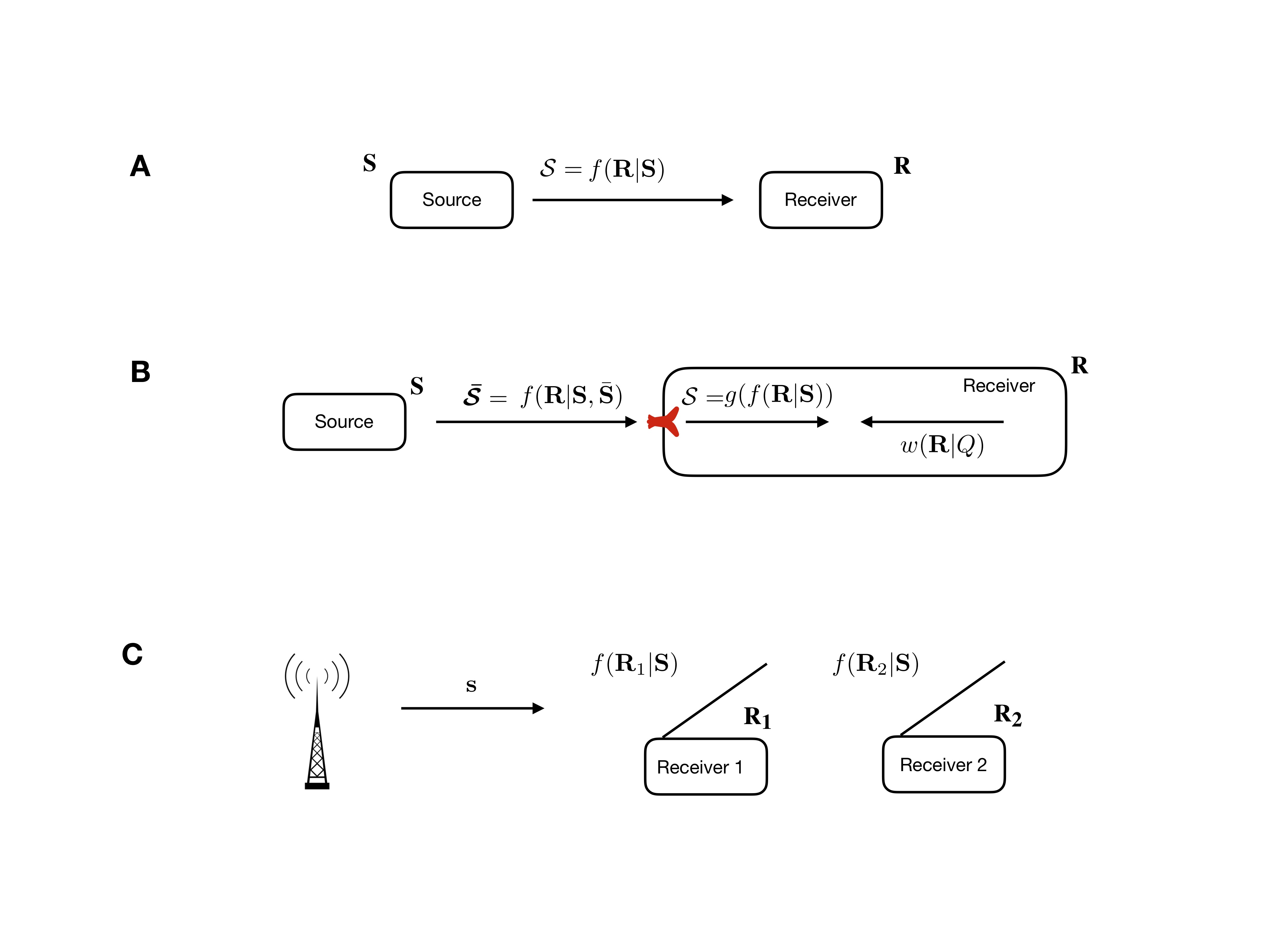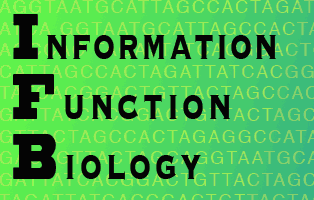A Theory of 'Meaning'
Meaning in the usual sense appears to refer to a property of information that we as sentient beings receive and interpret. In order to build a theory of life as information processing, we have to substantially generalise that, to include what happens when information has an effect on non-sentient entities. First, we realise that ‘meaning’ is not an intrinsic property of information, it is always a relation between a piece of information and something else. This is because to have anything like meaning, information must have a context, there must be at least a receiver of the information, or something that is affected by this specific information in a particular way. This ‘something else’ is often referred to as a ‘receiver’ because information in the sense of ‘meaning something’ is usually considered a signal to be received and is typically analysed in terms of signage - the subject matter of semiotics.We can be more general given our proposition that everything is ultimately composed by information (information that gives it its form). Given this, the receiver is also essentially information, so that meaning is, in general, a property of the interaction among assemblies of information.
Meaning is strictly context-dependent. It only exists as a consequence of the context that one piece of information can give to another. Sometimes it is one tiny piece of information missing from a complex, that with it makes ‘sense’ and without it makes none. The meaning of ‘sense’ here, is that the complex (of both pieces of information) gains function from the missing piece, once it is supplied. Thus meaning is the functional result of mutual context (each component piece of information gives context to the other).
When pieces of information combine to gain greater function than their separate parts, the additional function is what we refer to as ‘meaning’, but we really need a new word to distinguish this more general idea from the common sense of meaning.
Additional function cannot appear out of nothing, it is the result of adding functional information. It seems that combining two pieces of information in a way that is meaningful gives rise to information from nothing, but this is not the case. The answer is that when two pieces of information combine, information is instantiated in the particular relationship or configuration that is formed by the combination. The combination must result in a particular configuration of the information pieces - one relative to the other in space and time. Thus, when two pieces of information combine in a particular way to form a more meaningful assembly of information, the information instantiated in that ‘particular way’ has function. It is this functionality of the configuration that we refer to as meaning.
In semiotics, meaning is the result of interpretation.
Semiotics is the study of signs, more specifically the communication of meaningful messages using, or interpreted as signs. A sign is anything that signifies, for example, the black and yellow stripes on a wasp, or the green light signifying go. We have to distinguish between the sign and the sign vehicle. The 'father' of semiotics, Charles Peirce, defined a sign as the result of interpreting the sign vehicle and a sign vehicle is whatever embodied information (either part of the presenter of the sign or transmitted by it) is used to signify: e.g. the green lamp of the traffic lights being illuminated. Interpretation is the formation of meaning from information. Meaning is relative and specifically relative to a self - an individual with identity (e.g. for me, that sign means X). Thus for a signal to become a sign, there must be a receiver that has selfhood and can interpret the sign. We have already seen elsewhere on this website that a self does not have to be a human being. Indeed the only necessary characteristic is the closure to efficient causation that gives a system an organisational boundary and a distinct identity. The ability to interpret is quite another matter, of course. It requires both perception and recognition. The dual requirements of closure to efficient causation (for selfhood) and perception and recognition together limit semiotic meaning to organisms. It could be argued that recognition is merely the correlation of an internal representation of the sign with an internal representation of its implication for the organism - e.g. an association in memory, such as black and yellow stripes on an insect represents danger. The implication is itself a pattern (e.g. in neural network connections) that either directly stimulates actuators (e.g. a simple organism that automatically moves away from the danger), or stimulates some higher level of behavioural control such as changing the emotional state of the organism, or biasing its action selection system towards an appropriate behaviour.

Diagram from Farnsworth (2023). How biological codes break causal chains to enable autonomy for organisms. Biosystems. 232. 105013.
